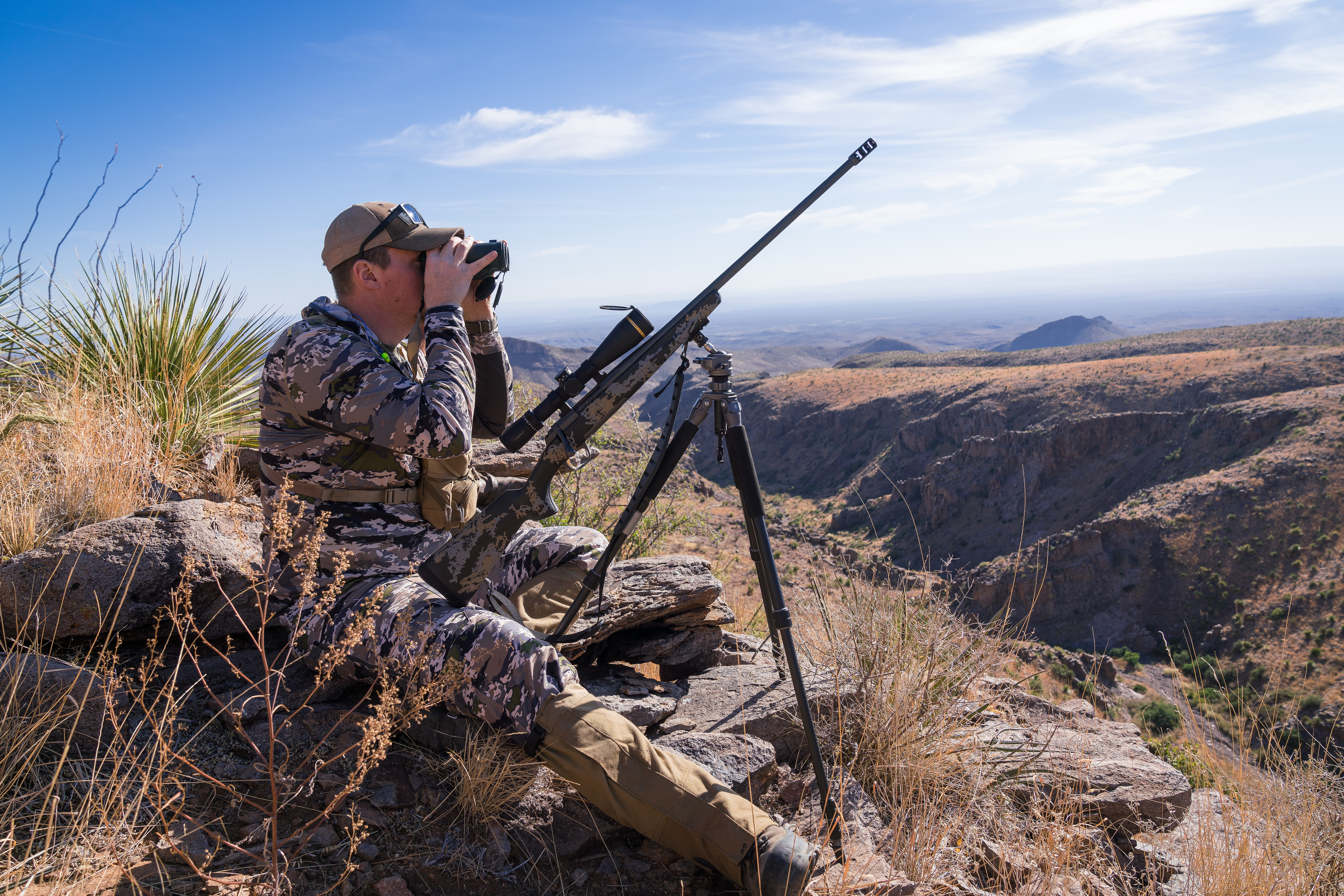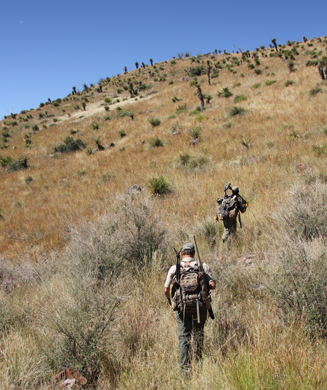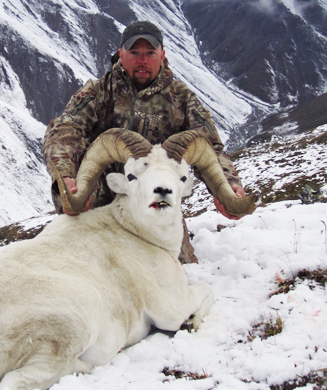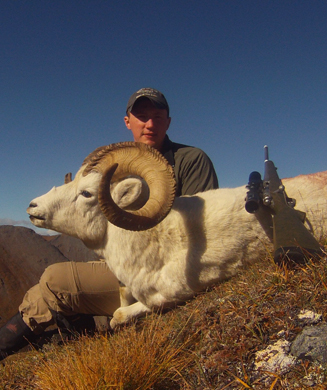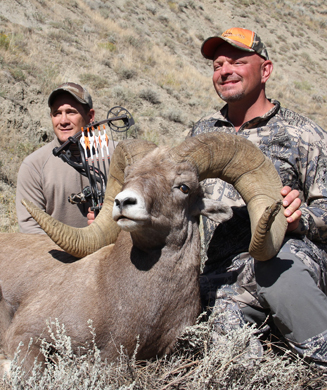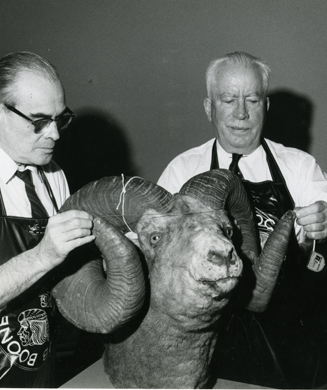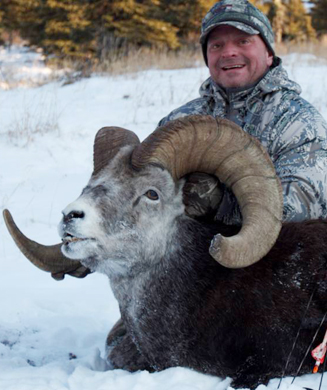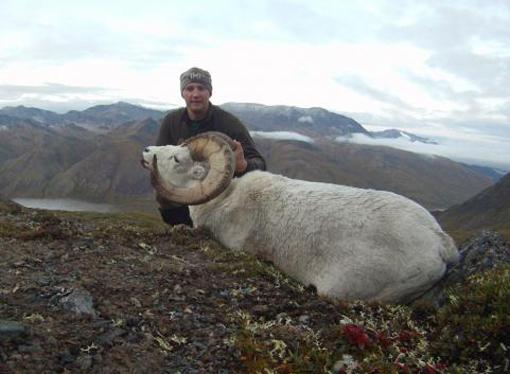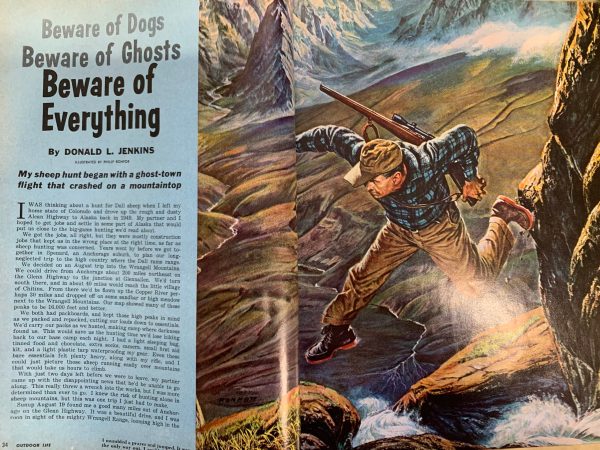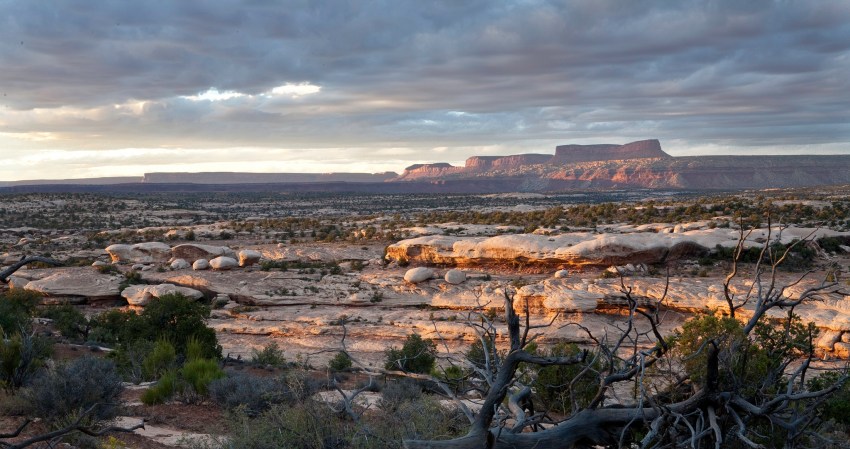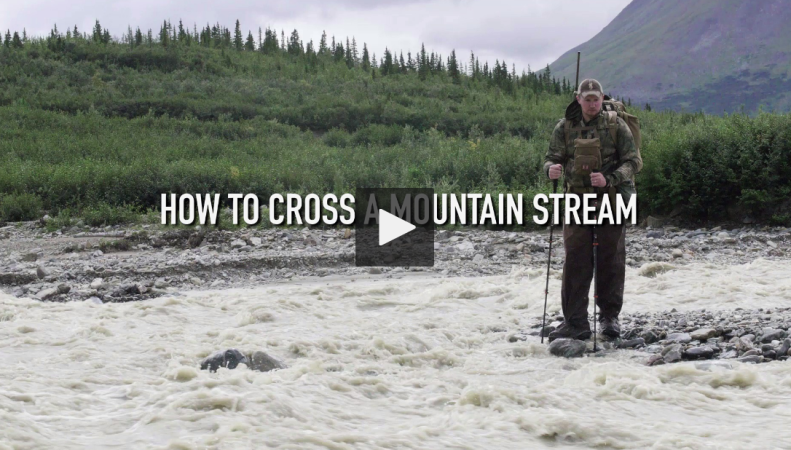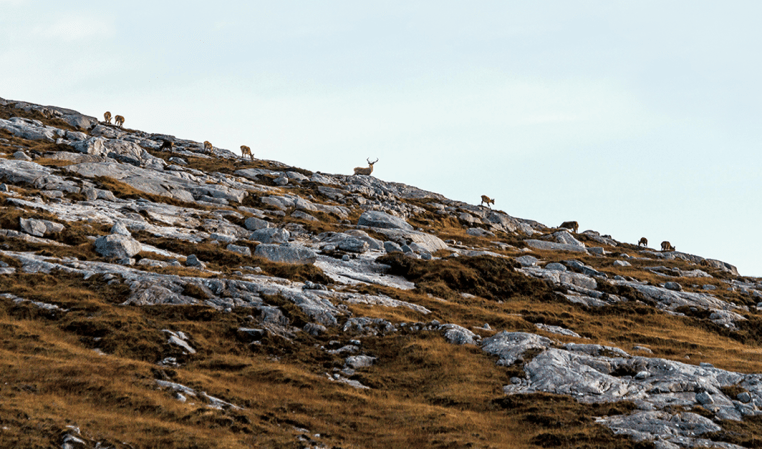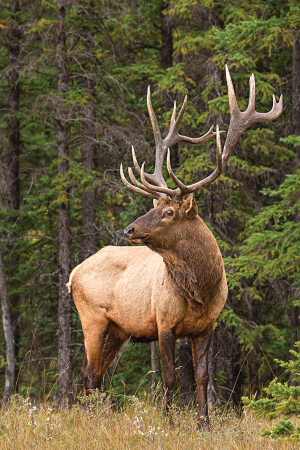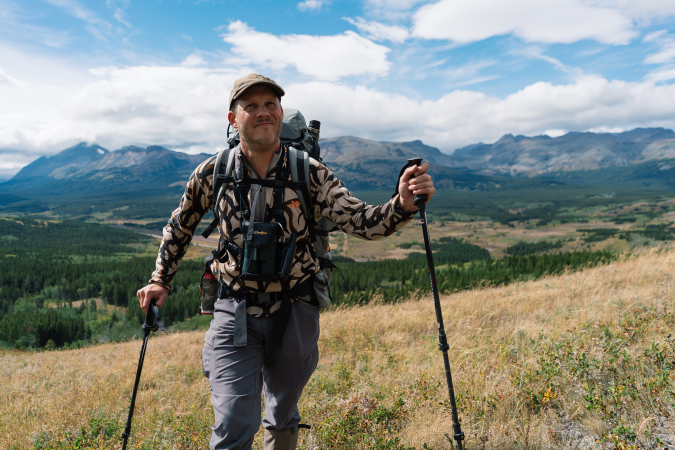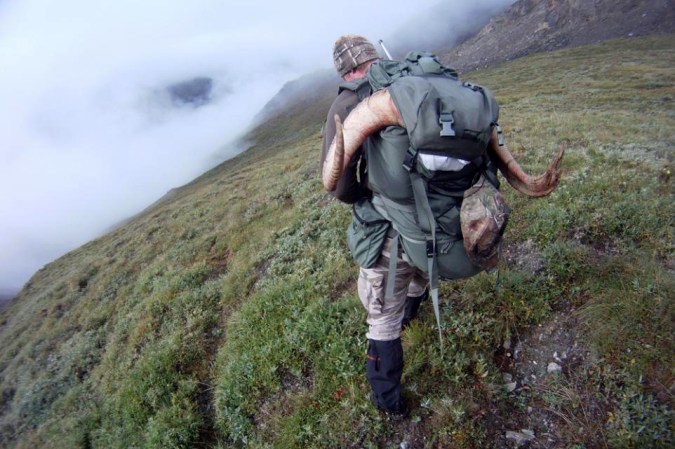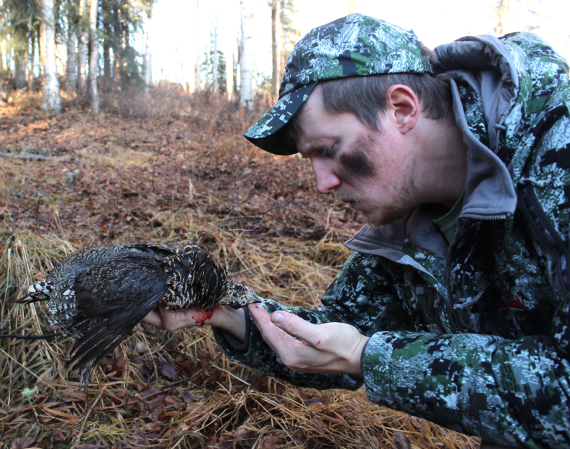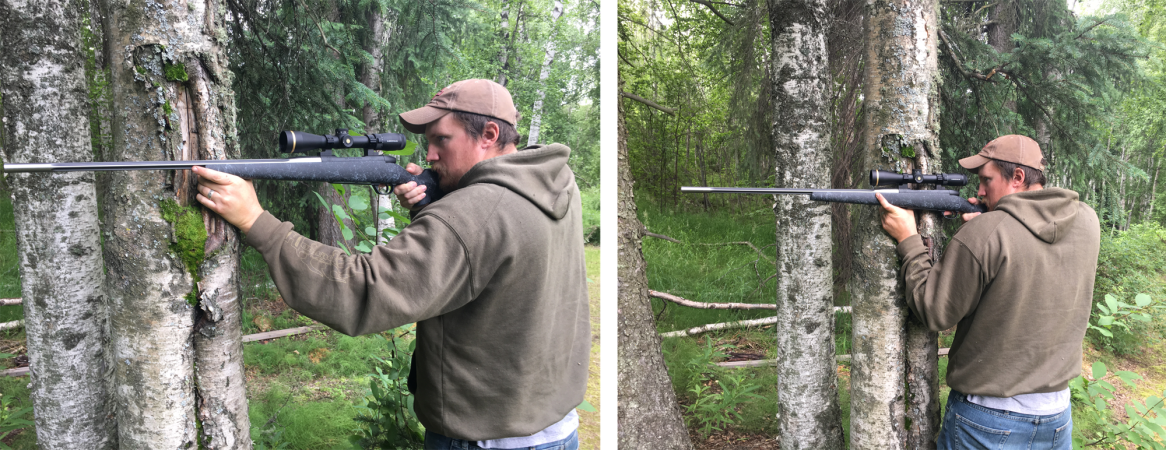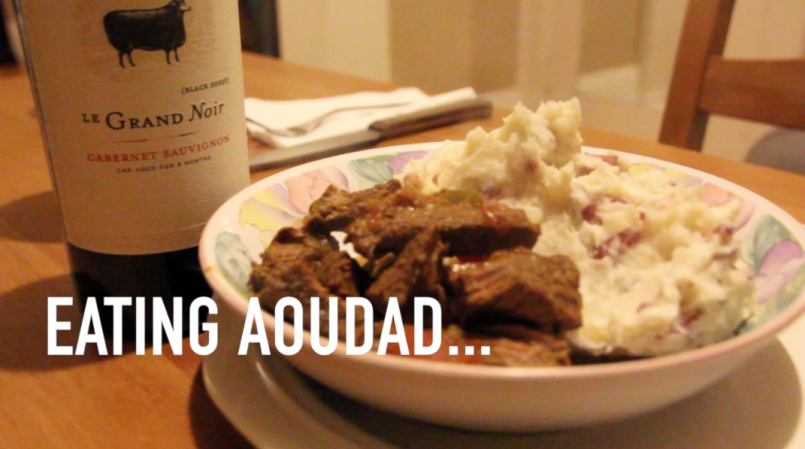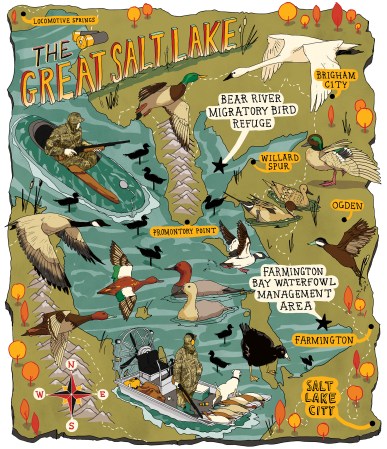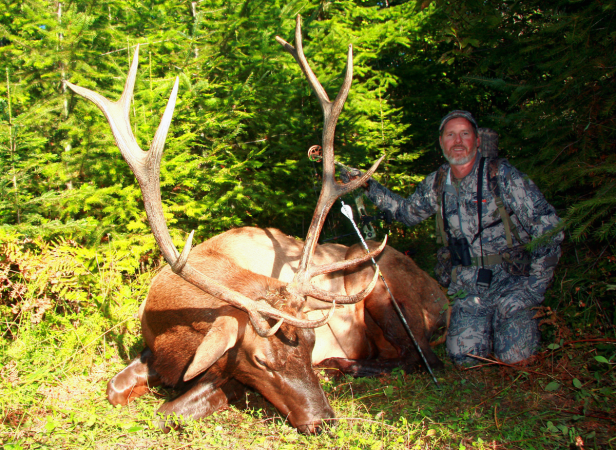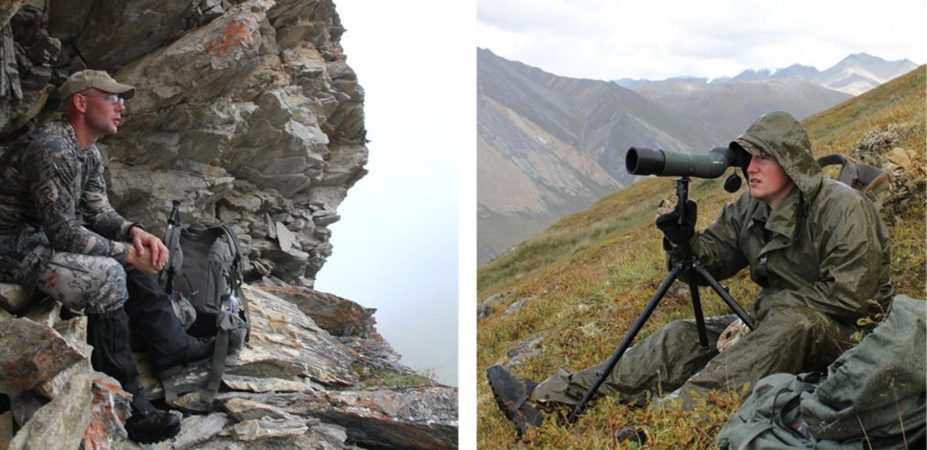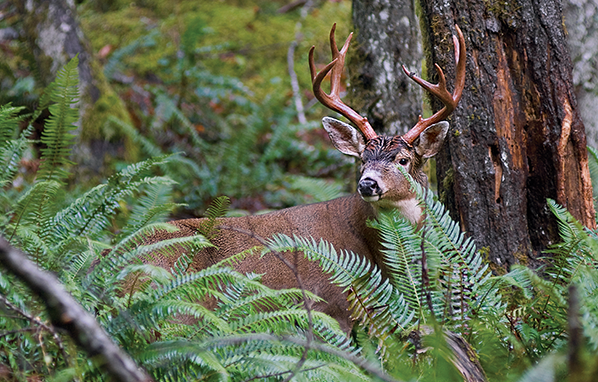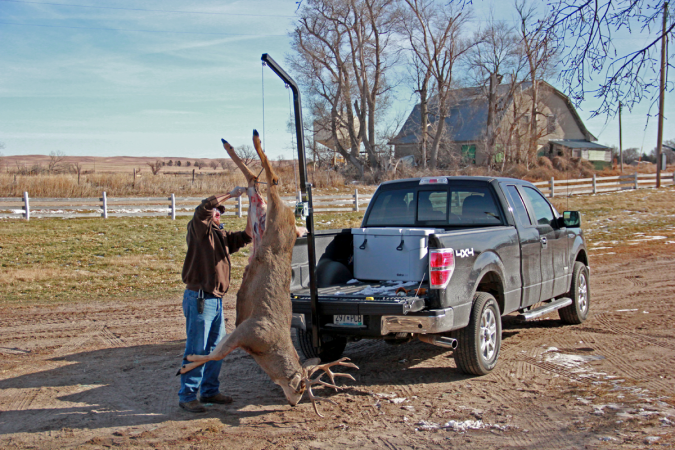My stomach churned as I climbed the steep canyon wall. We’d seen the ram go down and out of sight as he crested the sharp ridgeline, but that brought little comfort. I’ve seen several animals disappear under similar circumstances. We didn’t talk. We urgently picked our way up a small chute that led to the last place we’d seen the ram. “I need to catch my breath before we pop over. Things might happen quick,” I said to my guide Trent. We stopped for a few seconds in the cool late-afternoon shade cast by the summit of the rocky, cactus-covered ridgeline. I put a round in the chamber and we slowly moved forward.
The Poor-Man’s Sheep Hunt
I’m not sure I’d even heard of an aoudad or barbary sheep until about five years ago when our editor-in-chief Alex Robinson hunted them for the first time. In fact, the species had flown under-the-radar of many hunters. Aoudad hunts have garnered a reputation as a “poor-man’s sheep hunt” or “every-man’s sheep hunt” due to their abundance and relatively low cost compared to hunting native species of North American wild sheep. In the lower 48, there are free-range opportunities for private and public land, draw, OTC, guided, and DIY aoudad hunts.
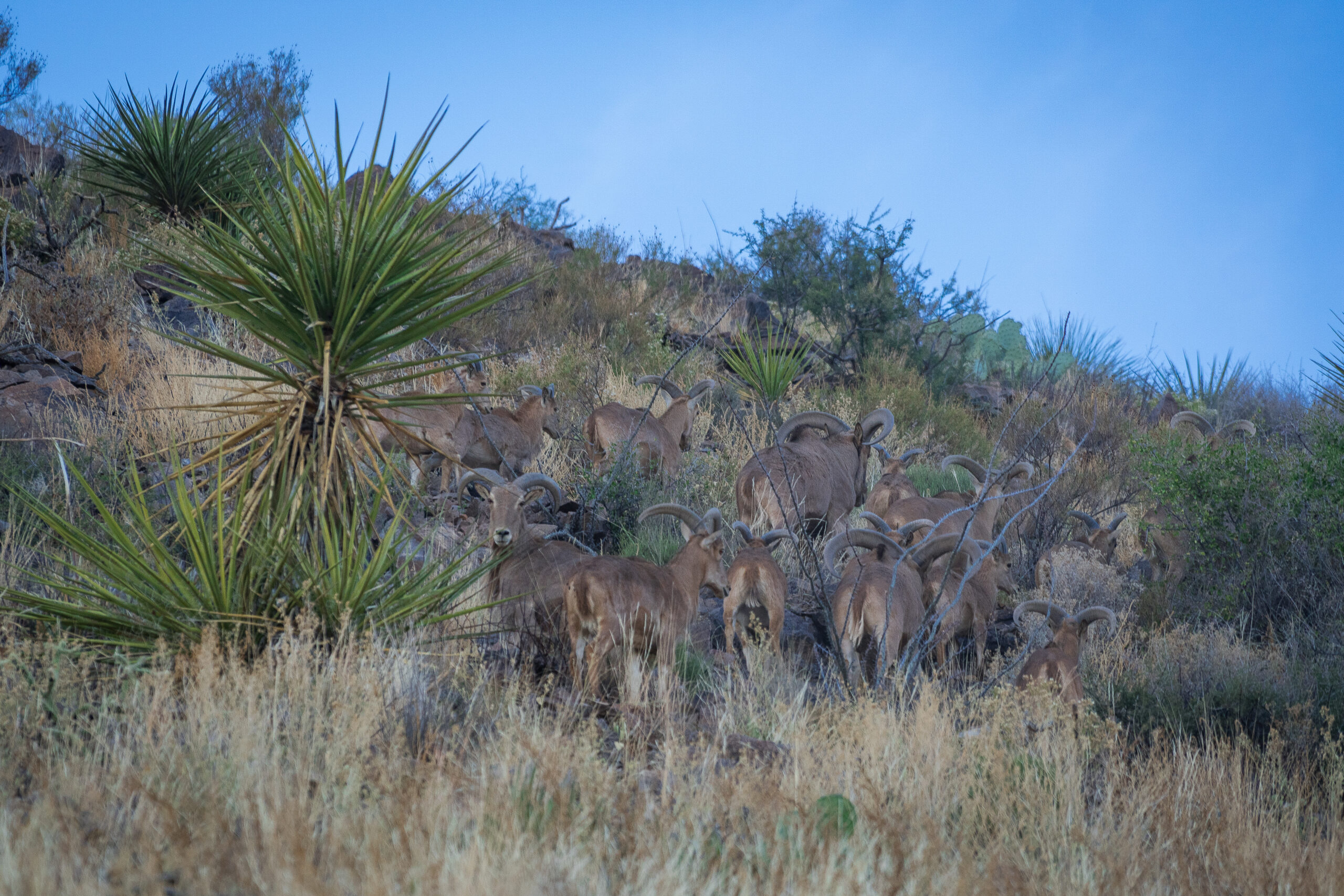
For long-time sheep hunters, any opportunity to hunt wild sheep is an appealing prospect and from the moment I heard about aoudad, I wanted to hunt them. The draw of sheep hunting is hard to explain to someone who hasn’t tested themselves against the mountains or felt the heaviness of a ram’s rippled horns in their hands. Legendary Outdoor Life shooting editor Jack O’Connor put the draw of sheep and sheep hunting to paper better than anyone else could.
“The wild ram embodies the mystery and magic of the mountains, the rocky canyons, the snowy peaks, the fragrant alpine meadows, the gray slide rock, the icy, dancing rills fed by snowbank and glacier, the sweet, clean air of the high places, and the sense of being alone on the top of the world with the eagles, the marmots, and the wild sheep themselves.” —The Bighorn, March 1960
Could this resilient North-African import roaming the mountains of West Texas scratch the same itch as hunting Dall rams in my home state of Alaska? Is it really a “sheep hunt,” or is it merely an overreaching misappropriation of the nomenclature that rock-crawlers and mountain-dwellers hold in such high regard? I hoped to find out how it would compare. Whether a “real” sheep hunt or not, it looked like fun.
To the Border
This sure isn’t what I’m used to, I thought to myself as we walked through the gates of what used to be a fort at Cibolo Creek Ranch, about 15 miles north of the Rio Grande River. The ranch—which sits at the base of the Chinati Mountains—was established in 1857 and is now a rustic 5-star resort with plenty of hunting opportunities in the surrounding mountains. I chuckled to myself as I settled into my room. I guess this is how the other half lives, I said aloud as I plopped myself onto the bed after a long day of travel—a bed and room nicer than my own at home.
I first saw my invitation to come hunt aoudad with the crew from Browning and Winchester on my way back from my own Dall sheep hunt in August— an ass-kicking that I won’t soon forget. We’d hiked many miles, dealt with yellow-jackets and multiple bears, been beaten up by the weather, had luck roll the other way, and finished it off with a three-day fast after running out of food. As I thumbed through my phone, I saw the invite was several days old and hoped I hadn’t missed the boat. Aoudad was high on my list, and I was already yearning for another opportunity to hunt sheep of some kind.
Coming directly from an elk hunt in New Mexico, I welcomed the 7 a.m. breakfast and more-casual morning routine. Unlike the pursuit of deer and elk, sheep hunting often isn’t a dawn and dusk affair. Stalks can take a long time, but animals can usually be found throughout the daytime hours. I thought it had to be a mistake when I’d first seen that we were only scheduled for two days of hunting. But it wasn’t, and I finally concluded. I’m used to enduring two or even three days or hiking just to get to where I start looking for sheep. Our guide Trent was even-keeled with a quiet confidence that was reassuring. I quickly noted the dried blood on his bino harness with a Havalon stuffed in the side pouch—it told me that he knew his business.
To the Sheep Hills
Because the long drive from El Paso had put us into camp after dark, we hadn’t had a chance to check the zeroes on the rifles we would be using. After breakfast, we jumped in a Kawasaki Mule and pointed toward the mountains. We stopped along the way to check our zeroes on rocks at about 450 yards. Although it bothered my usual attention when it comes to hunting rifles, I knew that if the elevation correction was accurate at that distance, I should be in good shape. I didn’t want to shoot any farther than that anyway. A few dusty smacks on a rock, and it looked like that X-Bolt Mountain Pro was on the money.
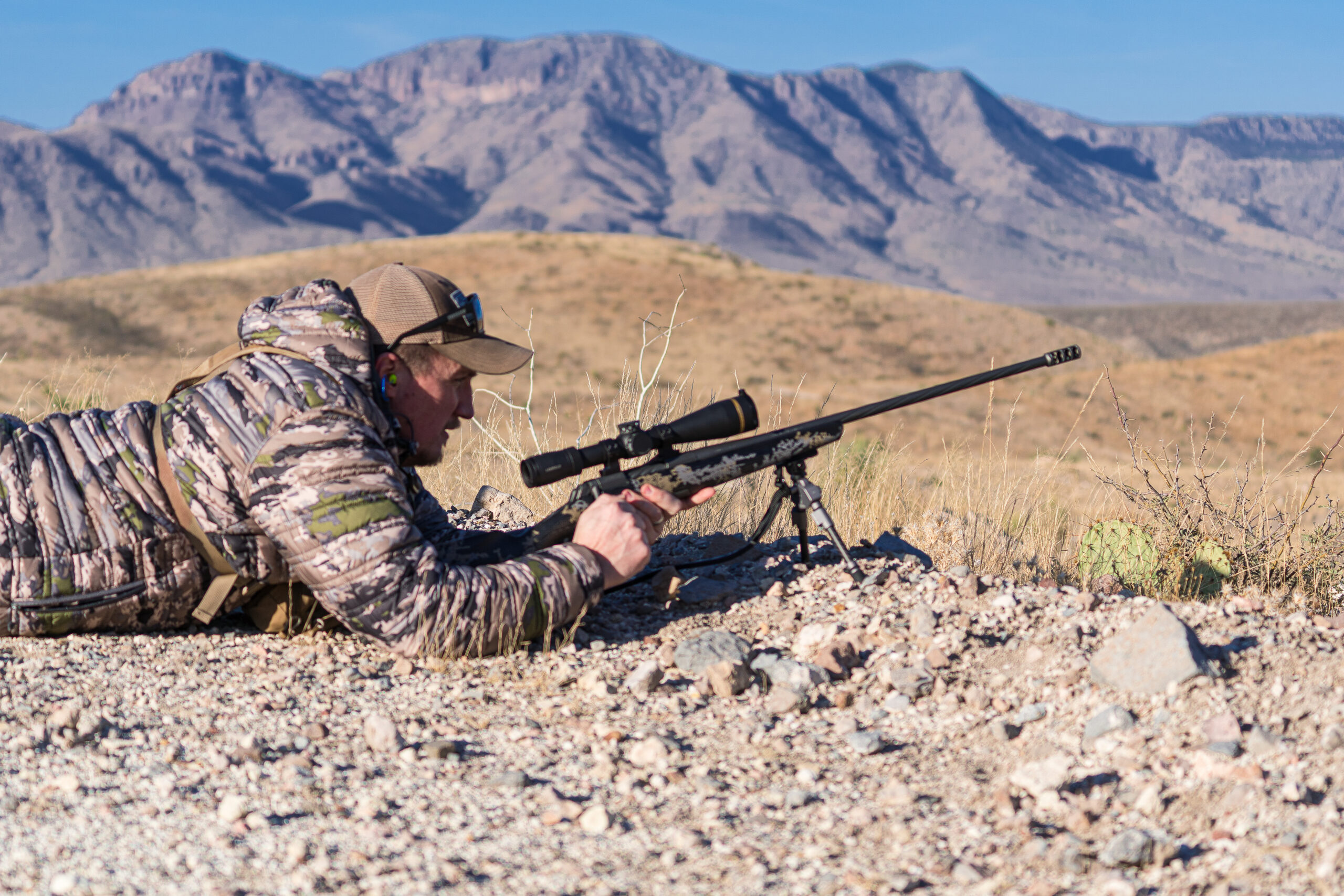
As we climbed up the gravel trail into steep rock-rimmed canyons, we decided to have the other hunter in our party—Tom Beckstrand a writer for Guns and Ammo—shoot first. Even on a two-day hunt, I felt like I’d be shorting myself on experience by shooting the first ram I saw on the first morning. I wanted to look over a few critters, and although I’ve shot more than a fistful of opening-day Dall rams, it usually takes several pre-season days to put myself in that position.
We started seeing groups of aoudad almost immediately, and the first bunch had a mature ram that was broomed heavily. We continued moving up the web of canyons, carefully glassing for the tawny-colored sheep that blend so well with the desert rocks and brush. After a couple hours, we rounded a bend and spotted three rams on a steep hillside to our right, about 350 yards away. The rams saw us too, and seeing that one of them was a large, mature ram, Tom hurried to a spot he could shoot from. I watched dust fly off the aoudad’s hair with both of his shots, and the ram toppled out of sight.
After hiking to Tom’s ram and getting it packed back to the Mule, we drove back to get it in the cooler and have lunch. Although that high desert was downright chilly at night, the sun quickly warmed it to around 70 degrees—hot summer weather for me. We checked in with the other group, ate lunch, and planned for the evening.
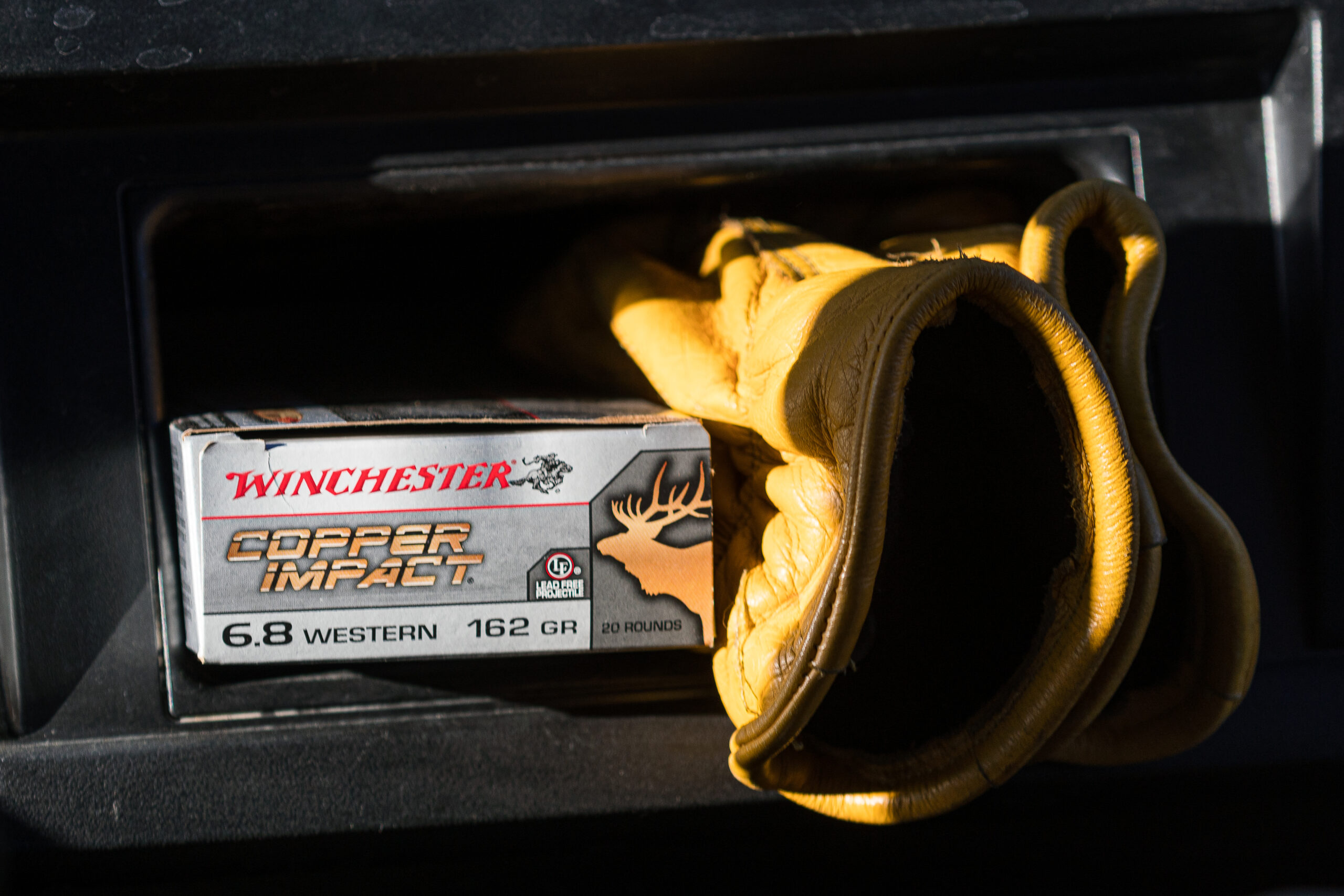
Cross-Canyon
The mid-afternoon heat was eased by a soft breeze as we made our way back to the mountains, skirting the edges of the small range rather than going up-canyon as we had done in the morning. We carefully glassed the points and rocky ledges for bedded bands of sheep but weren’t turning up much. We undoubtedly missed some sheep. Even in the mountains of Alaska, it can be easy to overlook the white Dall sheep, the dull copper-colored aoudad melt into the landscape, only standing out when bunched up and moving.
We turned the corner into a wide, promising-looking basin and stopped short. Not seeing any aoudad initially, we walked out to a point that would give us better visibility of the valley. Trent picked them up almost immediately as we came to a canyon edge—a herd of 30 or so sheep on a rock outcropping across the canyon. “There’s one ram in that bunch, he’s old, but really broomed back.” After looking him over, I decided to look for a longer-horned ram. I’m a sucker for heavy broken-horned sheep, but this one wasn’t what I was looking for in my first aoudad. We began to examine the ridgeline more-carefully. Within a minute or two we noticed more sheep moving up from the sharp draw below us. Because they blended in even better than the mule deer and mountain whitetails we were seeing, spotting aoudad was an incredible challenge. A few might give the bunch away, but the more we looked, the more we saw—hidden in plain sight.
“Whoa, that’s a shooter, coming up from the draw,” Trent said. The ram—following a few ewes—was about 350 yards out, working his way up and away from us, toward the group we had originally spotted. He must have been there the whole time, bedded in the shade among the cactus and brush a few hundred yards away.
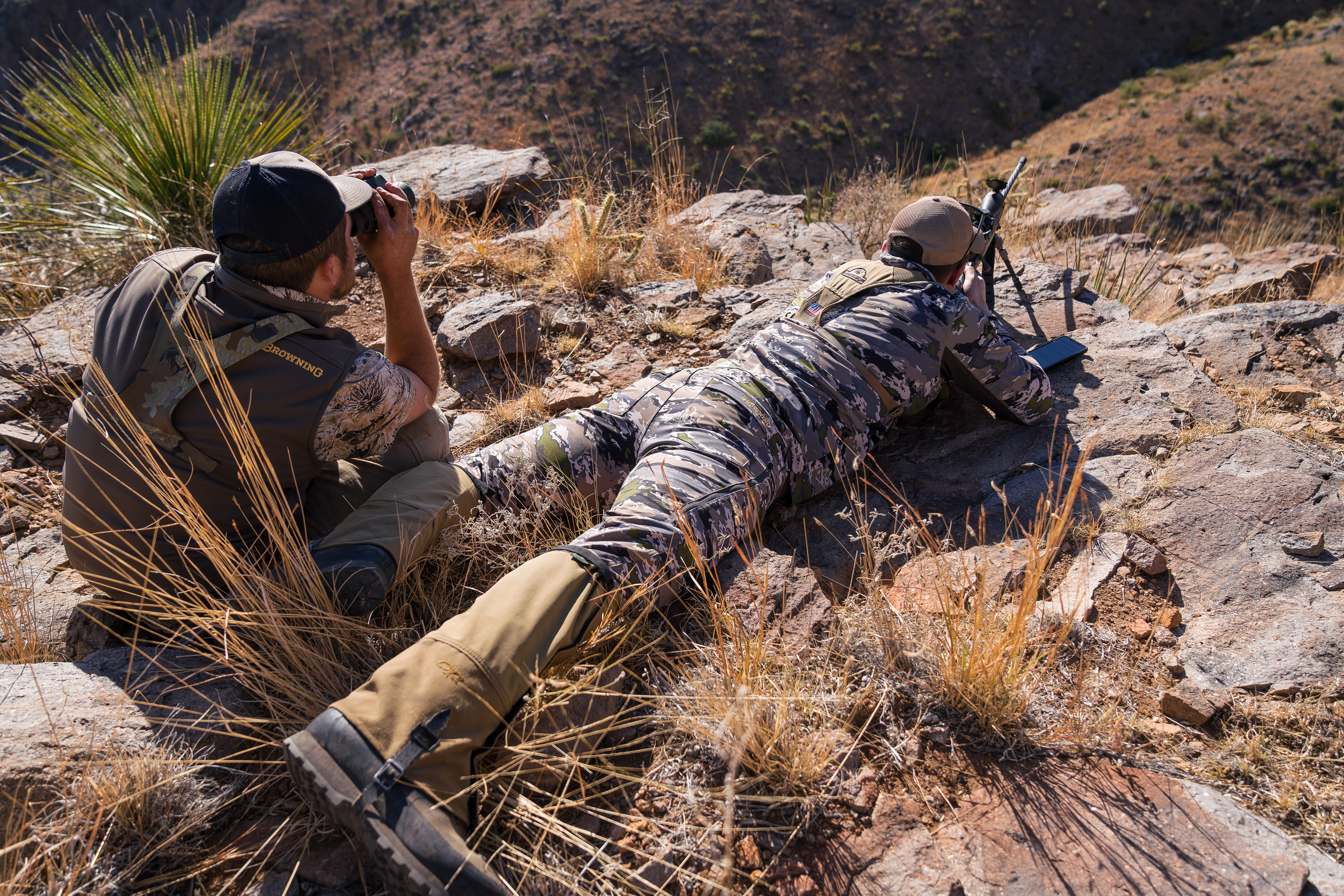
I quickly prepped my rifle, attaching my bipod and lying prone on a rock at the edge of the canyon. The ram had us made before we spotted him, and he was steadily heading in the other direction. He was going to be between 400 and 420 yards, so I made an elevation correction. The slow breeze being a minimal factor, I held dead on his shoulder. I squeezed the trigger. Whop. We knew it was a hit, but the ram ran about 20 yards, angling farther up. He was almost to the cusp of the ridgeline. Boom. Whop. Another shot connected, but we couldn’t tell where it hit him. The ram quickly went down, but we could see his horns through a bush, still upright. We waited.
My heart began to race as I could see the situation I envisioned coming apart. I always want to make the best shot I can, and the uncertainty began boiling up as we realized that I needed to shoot this ram again. To get him to stand, I sent a bullet into a rock behind him. It did the trick, and he paused as he crested the top. I shot again, another hit, and the ram went down and out of sight. We were still unable to tell where I’d hit the ram. Like many mountain-dwelling animals, aoudad have a reputation for being tough. My stomach knotted.
We needed to move. Trent and I scrambled down to the bottom of the canyon and up the other side. The oddly familiar breathless scramble up a steep canyon chute is something I’ve experienced plenty of times, now picking my way through cactus and dry dusty rock. My mind ran wild with the various situations we might encounter. Things hadn’t gone the way I wanted, but we had to make sure to get this ram down if he wasn’t already dead. Before we crested the top—hoping to find my ram lying dead—I paused to catch my breath and slipped a round into the chamber, making sure my scope was on its lowest magnification setting.
Trent and I eased up the hill together and paused. “You see his horns right there? He’s bedded looking this direction, step up and shoot him.” Trent whispered. The ram was about 20 yards away. I’d seen the top of his horns about the same time as Trent, and we stepped up together. Without hesitation I shouldered my rifle, put the reticle on his front shoulder and let fly. The ram jumped to his feet as I cycled the bolt, and as he turned directly away from us, I snapped my aim to the middle of his back and fired again, sending a cloud of dust into the air and the ram onto the ground. We hurried over quickly and grabbed the ram’s legs as he breathed his last. He died on the edge of a cliff and one more kick would have sent him over a hundred feet down into the next canyon.
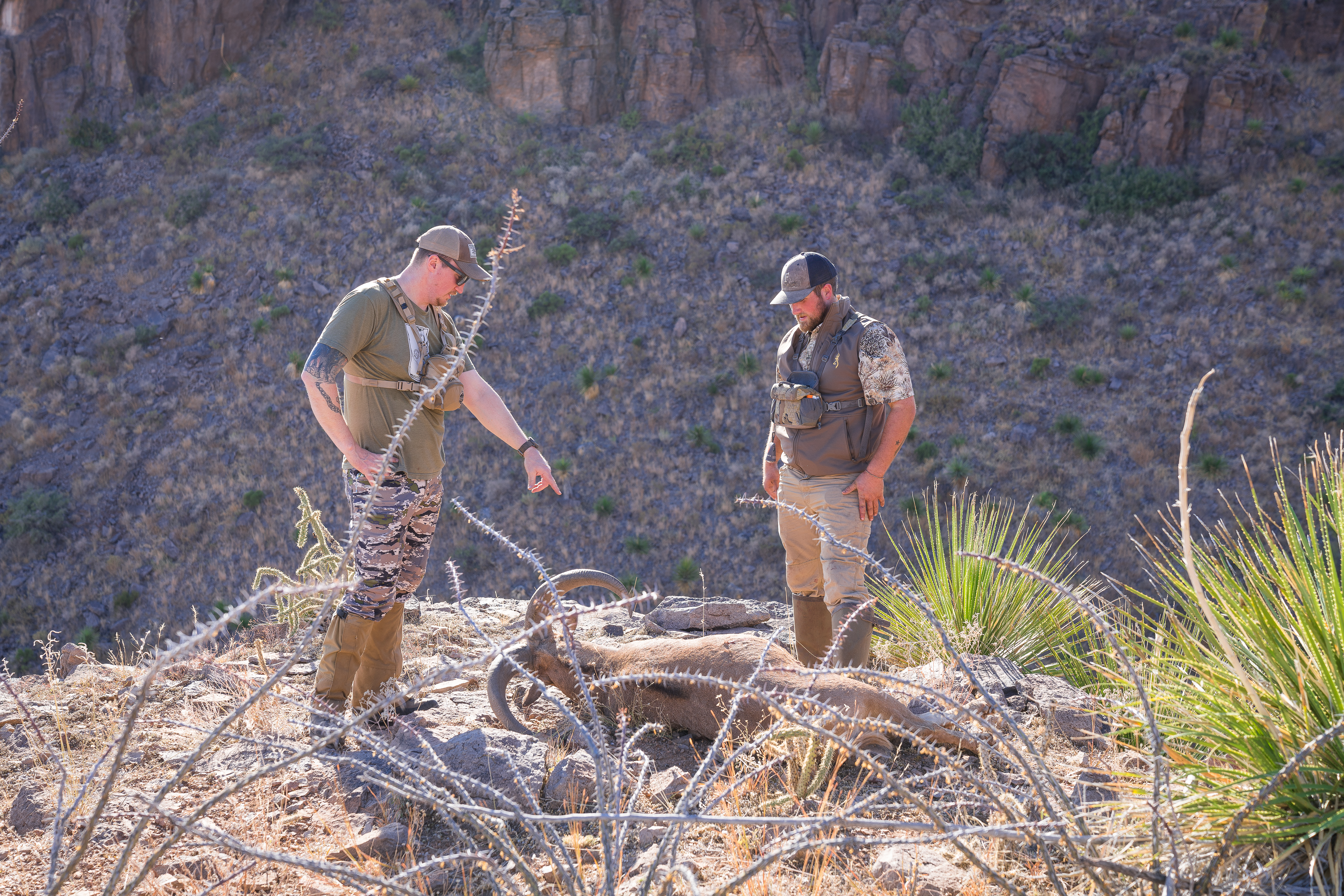
I didn’t know what the hell had happened, my shots felt good. The mix of bewilderment and regret that I felt in those moments of suspense was somewhat answered when I saw that my first three shots landed in a baseball-sized group on the back edge of his front shoulder, just low and through the brisket. I felt thankful that I was able to recover the ram quickly.
A Real Sheep Hunt
I won’t argue that sleeping by myself in a bed bigger than my tent with first-rate food and Tecate Light on tap at end of the day is anything like the sheep hunting I’m used to. Eighteen years straight of sleeping on rocks and tussocks, waking up to hundred-pound pack-outs, and measuring walking distance in days—not miles—has created an entirely different picture of what a “real” sheep hunt is to me.
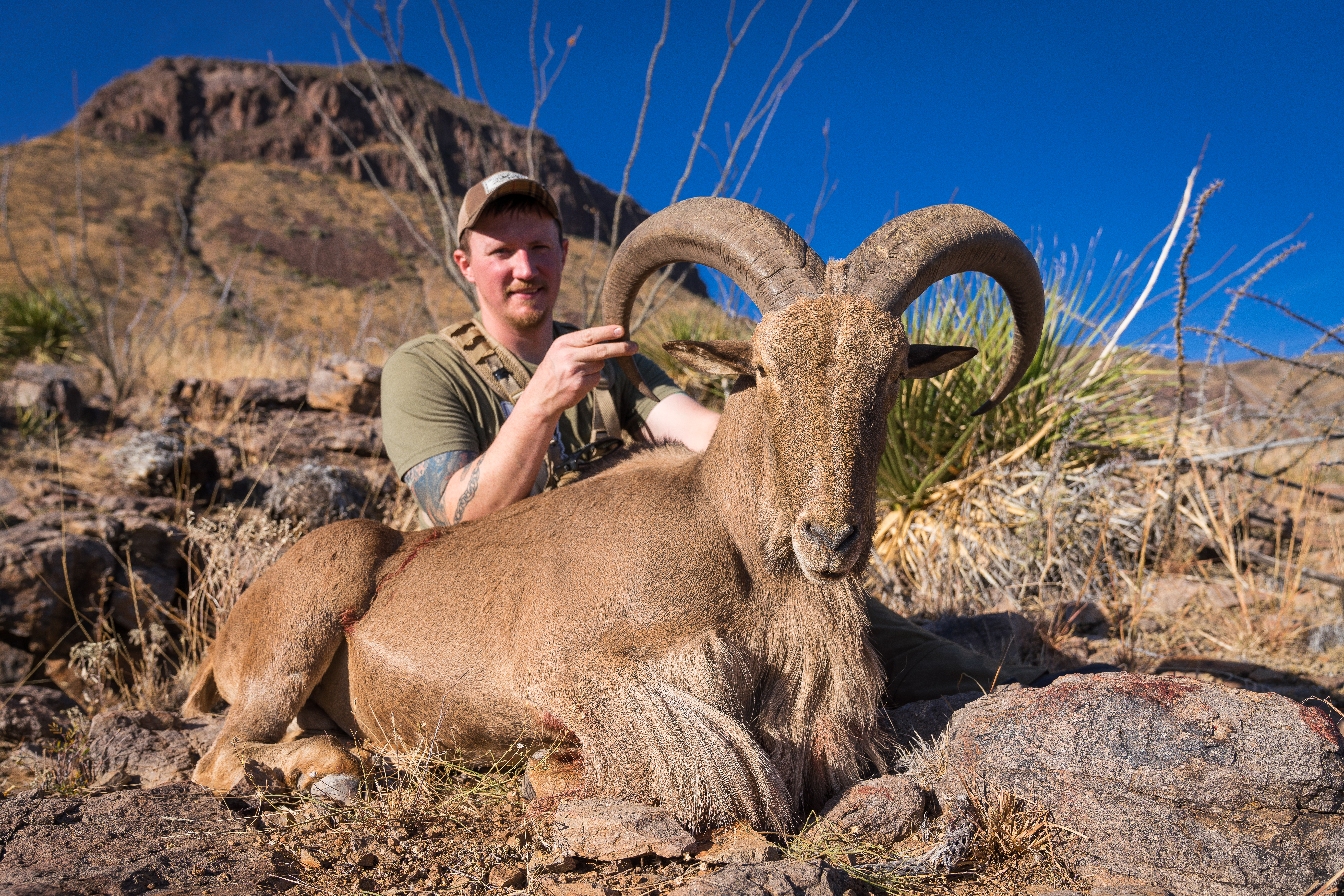
If you’re questioning whether an aoudad hunt is a “real” sheep hunt, then you probably already have your mind set. Aoudad are not Dall sheep, and a guided hunt for them isn’t a DIY sheep hunt in Alaska. But it doesn’t need to be. Many North American wild sheep hunts are far less challenging than the hunts I’m used to, and plenty are tougher, I’m sure. Sometimes a hunter can sleep in a comfortable bed at a nice lodge, sometimes a wall-tent, sometimes curled up under a tarp. The challenges of a sheep hunt can add value to our sense of satisfaction and accomplishment in our memories, but when hardship becomes the goal or a banner to be waved—not something to be endured in pursuit of the goal—then what we’re really talking about is ego.
To be untainted by preconceived notions, I think that a new hunt ought to be undertaken with an open mind—experienced for what it is. It’s certainly more fun that way. If an elk hunter comes to Alaska to hunt moose—expecting it to be like elk hunting—they’re setting themselves up to miss out on the experience for what it is. Should I continue to hunt aoudad, perhaps I’ll develop my own style and preferences. As with many animals, there are a wide variety of situations and manners in which to hunt them. Some hunts will be extremely challenging, others not so much. That’s hunting.
The aoudad might not be a Dall sheep, but it’s still a sheep hunt. It’s a much more attainable hunt too, and you can get a taste of what sheep hunters around the world experience: steep mountains and leg-burning climbs, spooky animals, scenic vistas, and a harsh landscape teeming with wildlife. As I put my hands on my ram’s horns, it was a feeling I’ve experienced before—each chip and bump is unique to that ram. The scent of sheep filled my nostrils as I studied him. As with many rams over the years, I felt that the hunt was over too soon, and I’d have to come back for more.

